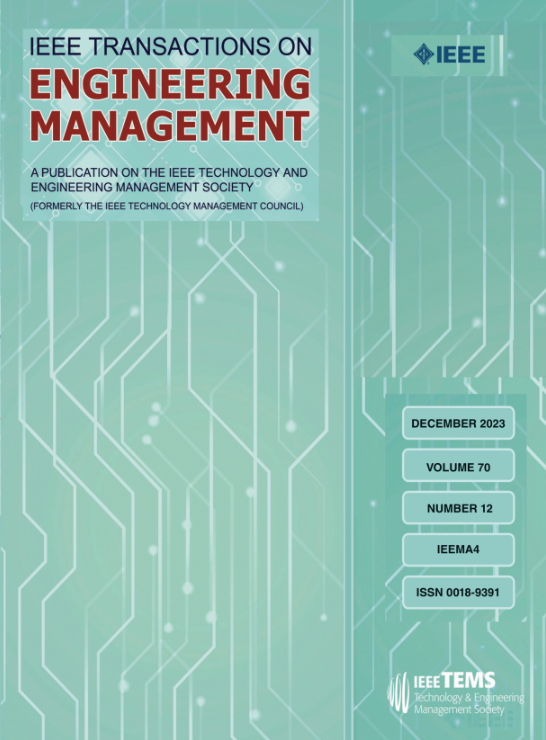"如何少花钱多办事?利用设计思维和解释性结构模型调查节俭创新的决定因素
IF 4.6
3区 管理学
Q1 BUSINESS
引用次数: 0
摘要
在当今世界,创新是日常生活的重要组成部分。企业经常与创新打交道,以最大限度地利用资源,为在竞争中取得优势奠定基础。然而,许多企业目前面临着资源稀缺和资金紧张的困难,这迫使企业寻求新的创新,这些创新不仅能带来良好的效果,而且所需的自然和金融资产也较少。因此,节俭创新在企业的成功中发挥着重要作用,而且随着这一概念及其各种实际应用的日益明确,其重要性也与日俱增。文献中对节俭创新的实际应用方面的论述仍然不够充分,这表明这种方法的可能决定因素及其相互联系的方式还不够清晰。本研究利用两种问题结构化方法--设计思维和解释性结构模型--建立了一个多标准模型,以澄清节俭创新过程中出现的问题。研究结果反映了一组与企业创新和/或中小型企业有关的专家的意见。随后,一位未参与小组工作的专家对研究结果进行了分析和验证,以使分析系统更具实证性。所提出的模型提供了节俭创新决定因素的整体视角,有助于企业理解和分析这些因素,并参与成功的决策过程。本文章由计算机程序翻译,如有差异,请以英文原文为准。
“How Can More be Done With Less?”: Investigating Frugal Innovation Determinants Using Design Thinking and Interpretive Structural Modeling
In the world today, innovation is an essential component of daily life. Companies deal with innovation on a regular basis to maximize their use of resources and form the foundations for competitive advantages over the competition. However, many firms currently face difficulties in terms of scarce resources and financial constraints, which have forced organizations to seek out new innovations that not only deliver good results but also require fewer natural and financial assets. Frugal innovation has, thus, been playing a significant role in companies’ success and growing in importance as this concept and its various practical applications have become more fully defined. Frugal innovation's practical aspects are still insufficiently addressed by the literature, which shows a lack of clarity about possible determinants of this approach and the ways they are interconnected. This study develops a multicriteria model using two problem structuring methods—design thinking and interpretive structural modeling—to clarify the issues that arise during frugal innovation. The results reflect the input of a group of experts linked to corporate innovation and/or small and medium-sized enterprises. The findings were subsequently analyzed and validated by a specialist who did not participate in the group work in order to make the analysis system more empirically robust. The proposed model provides a holistic view of determinants of frugal innovation, which can help companies understand and analyze these factors and engage in successful decision-making processes.
求助全文
通过发布文献求助,成功后即可免费获取论文全文。
去求助
来源期刊

IEEE Transactions on Engineering Management
管理科学-工程:工业
CiteScore
10.30
自引率
19.00%
发文量
604
审稿时长
5.3 months
期刊介绍:
Management of technical functions such as research, development, and engineering in industry, government, university, and other settings. Emphasis is on studies carried on within an organization to help in decision making or policy formation for RD&E.
 求助内容:
求助内容: 应助结果提醒方式:
应助结果提醒方式:


